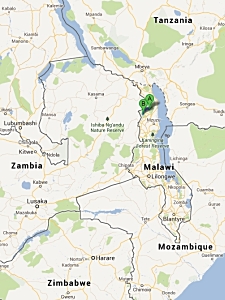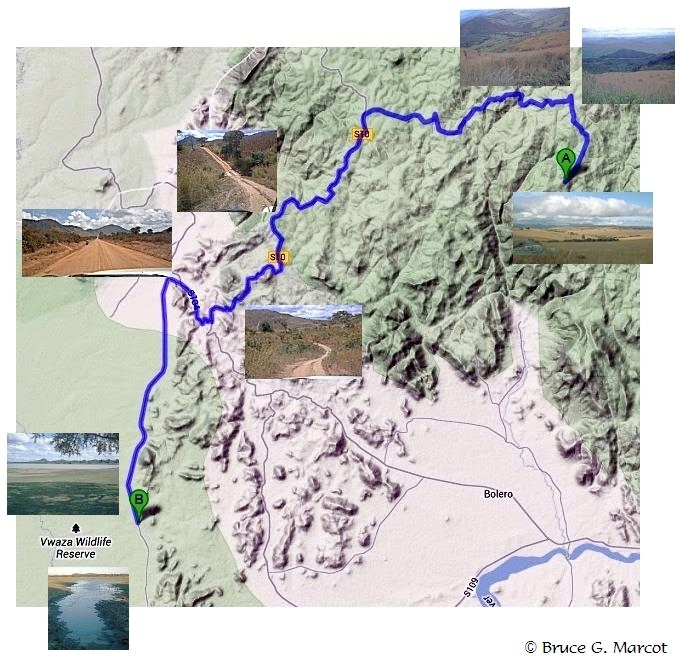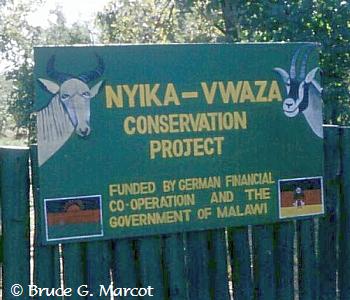|
Explanation: In
May and June of 2002, my wife and I found ourselves exploring some remote natural areas of northern Malawi in east Africa.
remote natural areas of northern Malawi in east Africa. After
spending time in the amazing high country grasslands and woodlands of Nyika
Plateau, we did a drive to Vwaza Wildlife Reserve. The
drive took us from the Nyika highland elevation of 7100 ft (2164 m), down
through numerous life zones and ecosystems, to the wetlands of Vwaza at 3420
ft (1042 m). En
route, we stopped many times, and I kept track of the changes in trees and
birds, and marked the elevations of those changes. This
week's main image is a summary of my observations on this Nyika-Vwaza
Transect.
Here is the extent of the
transect, starting at the high
plateau at
point A (upper right), winding through steep mountain country
of evergreen
forests, and woodlands of Brachystegia, miombo,
and acacia, and ending at the wetlands of Vwaza at Point B.
Click on the photo thumbnails for larger images,
and elsewhere on the map for a larger map image: 
Base map © Google Maps
It was most striking how tied the birds were to
the trees and vegetation
along this transect. For
example, I found Red-tufted Malachite Sunbirds and Miombo Double-collared
Sunbirds only in the Brachystegia woodlands above 6500 ft (1980 m)
elevation, whereas most of the higher-elevation birds dropped out when we
reached the miombo
and mixed miombo-Brachystegia woodlands at about 5500 ft (1675
m). Of course, some bird species migrate across altitudes by season,
so this was just a "snapshot" during the late May-early June
period. As we
entered the acacia woodlands at 4000 ft (1220 m), suddenly appeared Marshall
Eagles, Red-billed Queleas, Paradise Flycatchers, and Cardinal
Woodpeckers. And at the base elevation of Vwaza Wildlife Reserve, a
whole new suite of tree species appeared, including baobabs, monkey orange, African
star-chestnut, marula, bushwillow, pod mahogany, and a wonderful tree
named after the appearance of its large seed pods set within a flat disk,
"hedgehog in a saucer." Such
observations can prove very important as baselines from which to compare
later conditions cause by climate change. For example, if the
local climate should trend toward regional increases in temperature, the
first occurrence of some tree and associated bird species might be moving
upslope to higher elevations. The directional trend and rate of such
indicators could prove to be valuable for understanding the pace of changes
in other parts of the ecosystem. I
am not aware of any study that has been conducted on the elevational ranges and
co-occurrence of birds and trees in this part of Africa. Perhaps this
little study can spur others to replicate the transect and discover
different species and new relationships, and to monitor shifts over time in the
face of climate change.

|
Index |
Location | Search | About EPOW | ... Next >